Article begins
The story of a friendship between an anthropologist and trapeze artist.
Credit:
Eléonore Rimbault
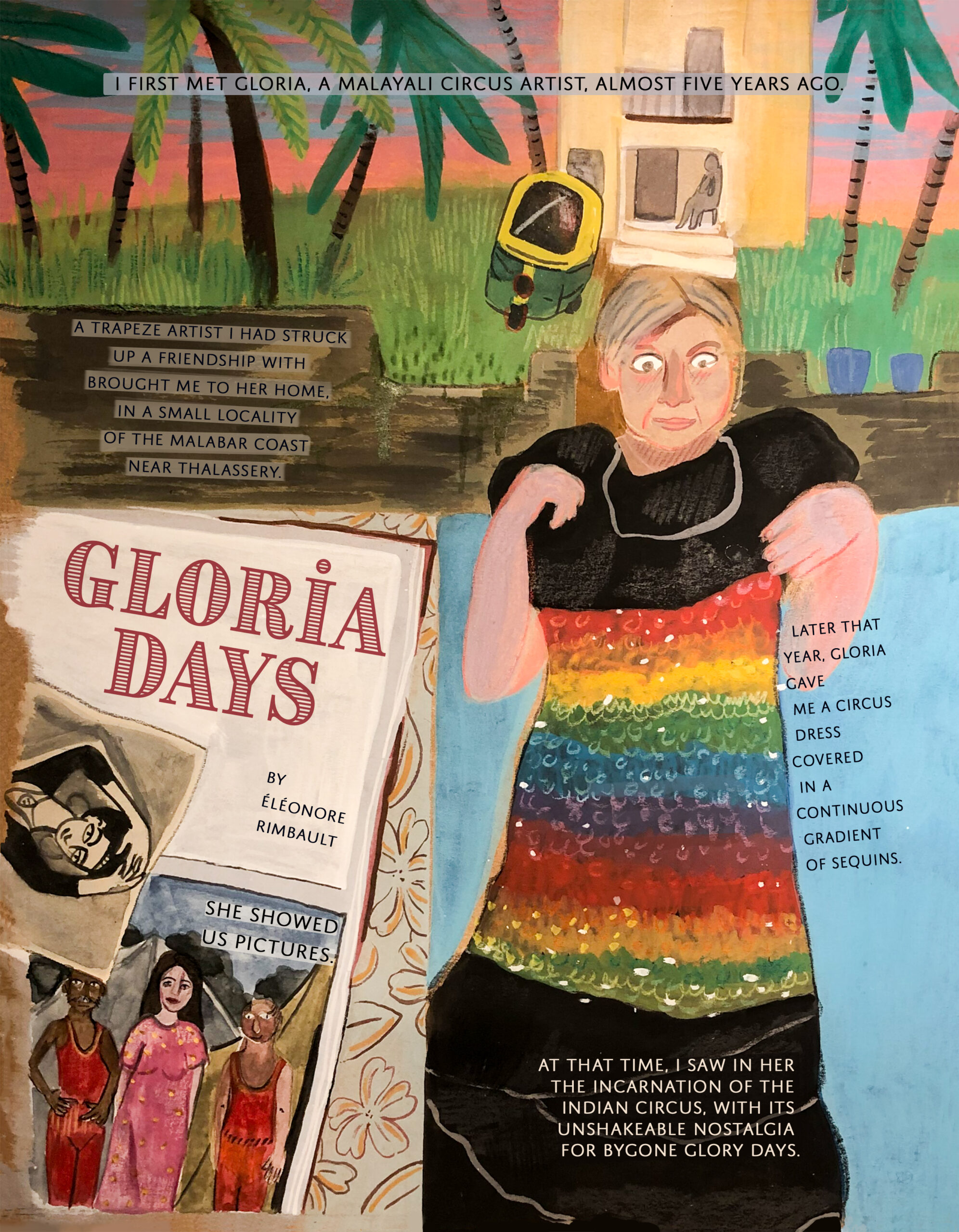
Image description: The image is a painted panel representing Gloria, a female circus artist who is now retired and the protagonist of this story. She is holding one of her circus costumes. A page of her photo album featuring old pictures of her and an image of her house are also represented. The text overlaid on the image follows “I first met Gloria, a Malayali circus artist, almost five years. A trapeze artist I had struck up a friendship with brought me to her home in a small locality of the Malabar coast near Thalassery. She showed us pictures. Later that year, Gloria gave me a circus dress covered in a continuous gradient of sequins. At that time, I saw in her the incarnation of the Indian circus, with its unshakeable nostalgia for bygone glory days.”
Credit:
Eléonore Rimbault
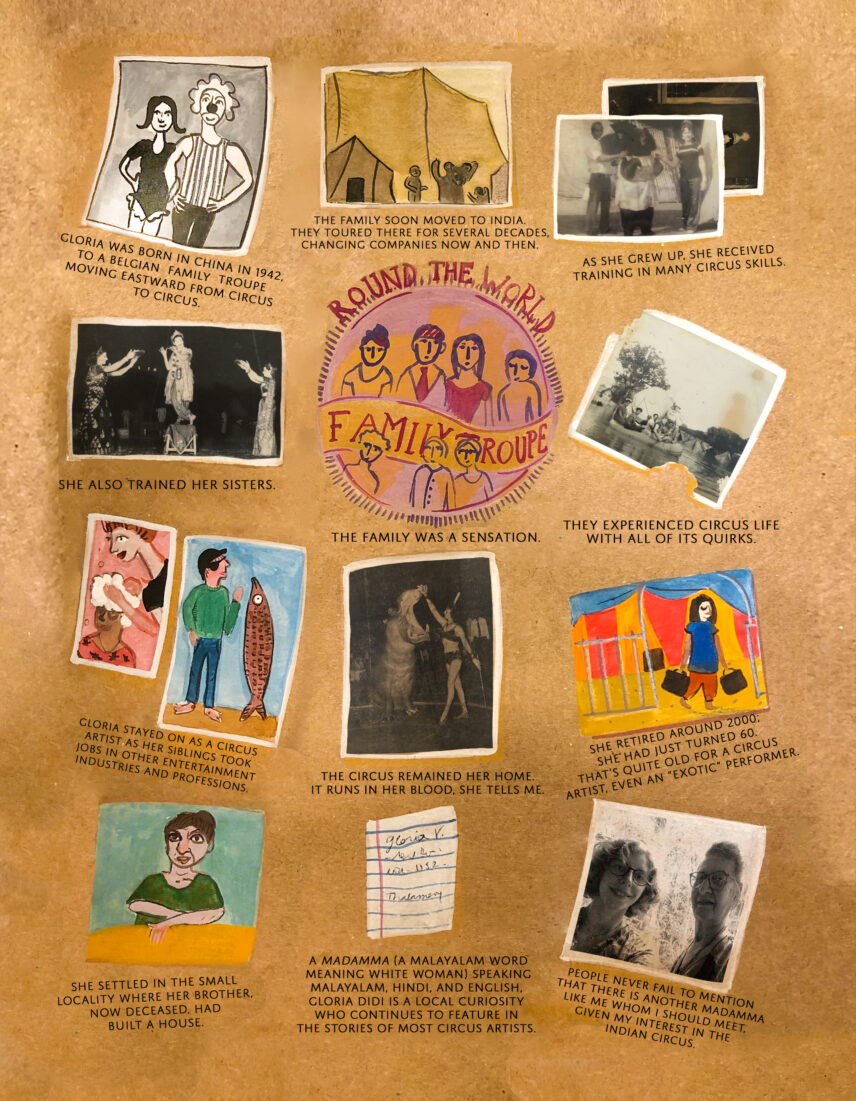
Image description: The image combines twelve images (a combination of photographs and drawings) representing moments in Gloria’s life so as to suggest elements of her biography. Text overlaid under the photographs reads as follows: “Gloria was born in China in 1942, to a Belgian family troupe moving eastward from circus to circus. The family soon moved to India. They toured there for several decades, changing circus company now and then. As she grew up, she received training in many circus skills. She also trained her sisters. The family was a sensation. They experienced circus life in all of its quirks. Gloria stayed on as a circus artist as her siblings took jobs in other entertainment industries or professions. The circus remained her home. It runs in her blood, she tells me. She retired around 2000; she had just turned 60. That’s quite old for a circus artist, even an exotic performer. She settled in the small locality where her brother, now deceased, had built a house. A madamma (a Malayalam word meaning white woman) speaking Malayalam, Hindi, and English, Gloria didi is a local curiosity who continues to feature in the stories of most circus artists. People never failed to mention that there was another madamma whom I should meet, since I have been researching the circus. People never failed to mention that there was a charismatic circus madamma whom I should meet.”
Credit:
Eléonore Rimbault
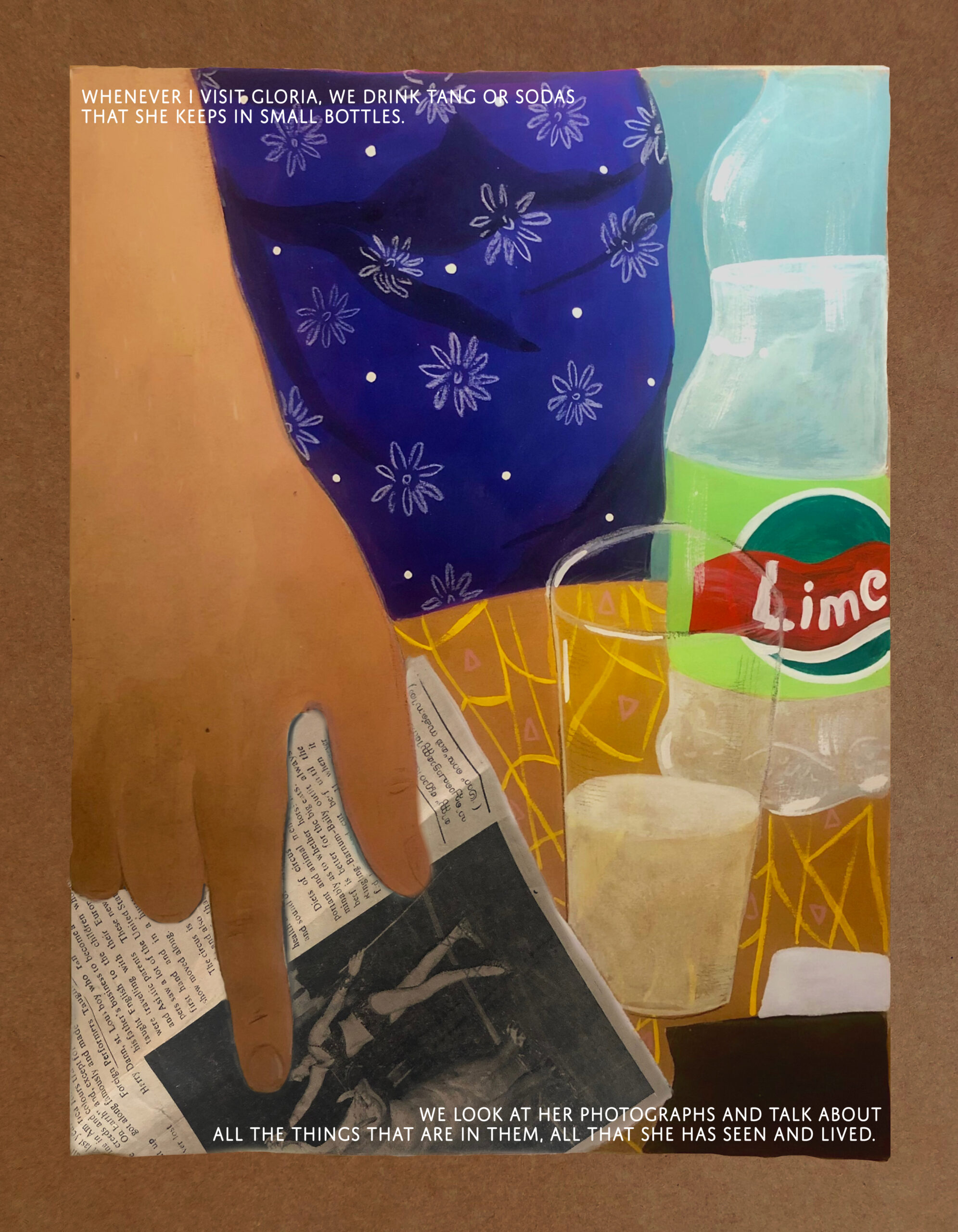
Image description: The image is a painting representing Gloria pointing to an old newspaper in which a photograph of her, in which she is posing in the circus ring, appears. The painting also features a glass filled with lemonade which is the drink she would share with the author when they meet. Text is overlaid on the image: “Whenever I visit Gloria, we drink Tang or sodas that she keeps in small bottles. We look at her photographs and talk about all the things that are in them, all that she has seen and lived.”
Credit:
Eléonore Rimbault
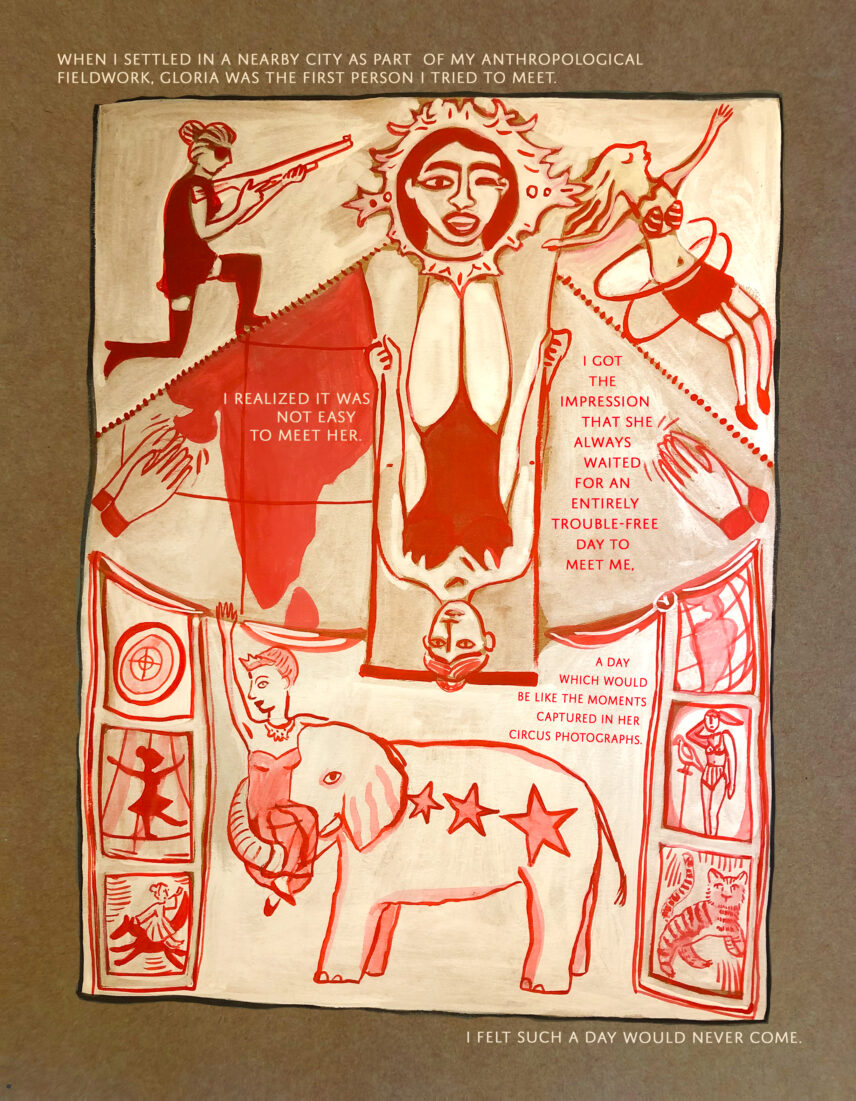
Image description: This panel drawn in the style of Indian circus posters represents different items that the female artist Gloria used to perform in the circus. She is seen holding a shooting gun, performing on the trapeze, doing hula hoops, sitting on an elephant. Various additional elements evoke the aesthetic of the circus. Text overlaid on the image reads as follow: “When I settled in a nearby city as part of my anthropological fieldwork, Gloria was the first person I tried to meet. I realized it was not easy to meet her. I got the impression that she always waited for an entirely trouble-free day to meet me. A day which would be captured in her circus photographs. I felt such a day would never come.”
Credit:
Eléonore Rimbault
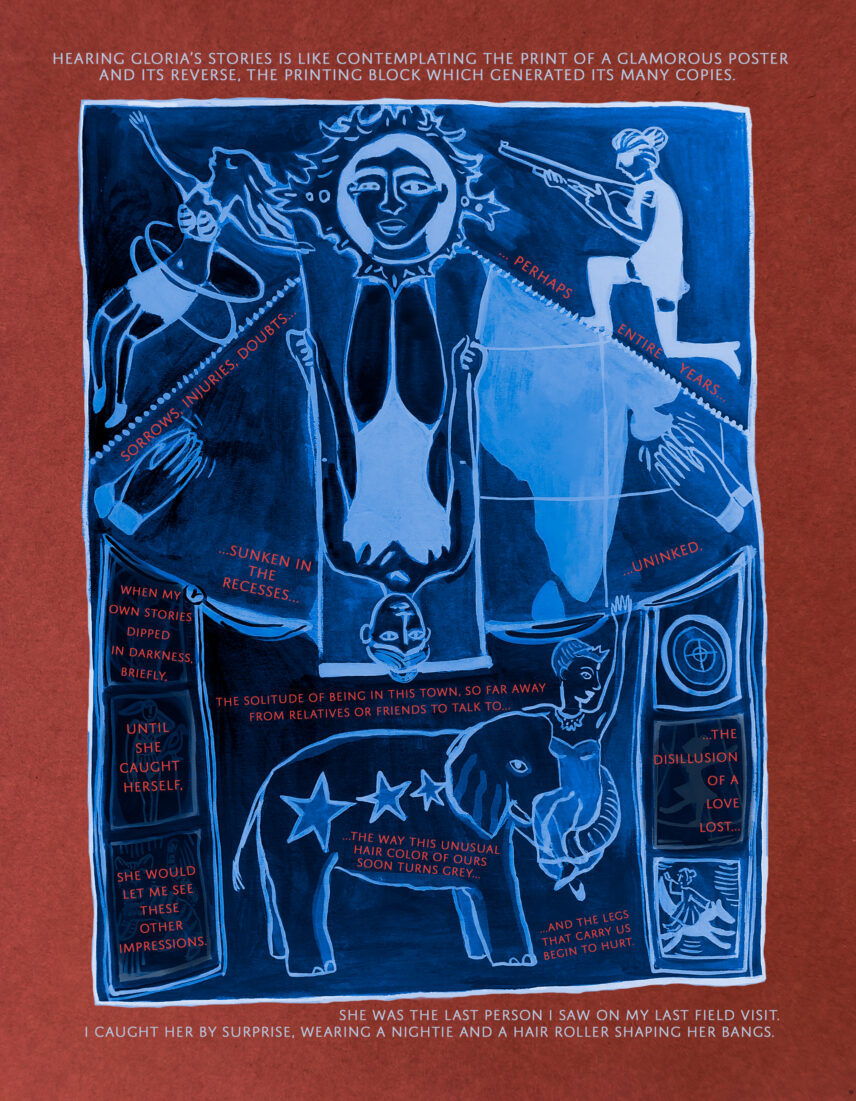
Image description: This panel drawn in the style of Indian circus posters represents different items that the female artist Gloria used to perform in the circus. She is seen holding a shooting gun, performing on the trapeze, doing hula hoops, sitting on an elephant. This image echoes the previous panel and reflects on the aspects of an artist’s life that are concealed by the aesthetic of the circus. Text overlaid on the image reads as follows: “Hearing Gloria’s stories was like contemplating the print of a glamorous handbill, and trying to imagine the engraved block in which it had been carved. Sorrows, injuries, doubts, perhaps entire years sunken in the recesses, uninked. If my own stories dipped in darkness, briefly, until she caught herself, she would let me see these other impressions. The solitude of being in this town so far away from relatives or friends to talk to; the disillusion of a love lost; the way this unusual hair color of ours soon turns grey and the legs that carry us begin to hurt. She was the last person I saw on my last field visit. I caught her by surprise, wearing a nightie and a hair roller shaping her bangs.”

